Basic flower arranging techniques
As mentioned above, Namika is a style of flower
arrangement that originated in the Edo period. During the Edo period, each school of Namika had its own techniques, and these techniques have undergone some changes with the development of the times and the changes in flower patterns. Now, these techniques have been basically fixed, and the basic techniques common to each school are briefly introduced as follows:
The technique of "scratching"
The literal meaning is to bend the branches and stems of plants, but in the case of flowers, it also means to straighten the originally bent flowers. So it is more accurate to say that "nao" is a way of trimming and correcting the flowers according to the posture you want. Therefore, the meaning here becomes correction or embellishment.
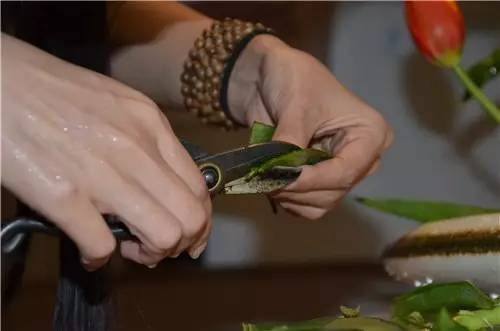
Correction method of " woody "
There are several methods for correcting woody trees, some of which are difficult. For example, for woody pine trees, the technical requirements are quite high, and the "wedge-twisting" method is used.
"Wedge-twisting" correction method The so-called "wedge-twisting" correction method refers to the correction method of inserting a wedge into the branch of the tree. The specific method is to first find a branch of the same type as the branch you want to bend, and their diameters must also be the same. Use this branch to make several required wedges, and then saw the branch used for flower arrangement vertically at the place where you want to bend. At this time, you can only saw halfway, and then gently bend the branch with your hand. At this time, the incision will also increase accordingly. When the diameter of the branch is seven or eight points, you must stop bending. At this time, insert the wedge into the incision until the bark and bark are connected and fit together. Since flowers are taboo to air, if there is air, the branches cannot absorb moisture well, which will affect the freshness of the flowers. Therefore, after inserting the wedge, you must apply soil on the joints. In this way, the flowers can be bent at will. Especially the flowers of Enshu school are very bent, and there are many places where the "wedge-twisting" technique is used.
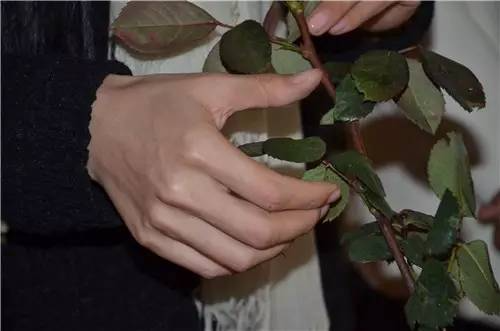
Generally speaking, the "wedge-twisting" method is mostly used for woody flowers with thick branches and easily broken. Willow branches are more "twisting" flowers, and people generally use them for practice. The curves made by "wedge-twisting" willow branches are very soft and beautiful.
Twist and turn correction method
This technique is to break the tissue of the part you want to bend, making it easier to bend. Sometimes you just want to make some small changes in leaves and branches, such as when you want the leaves to change direction, you twist the leaves with both hands. For branches, you first cut them with scissors and then twist them.
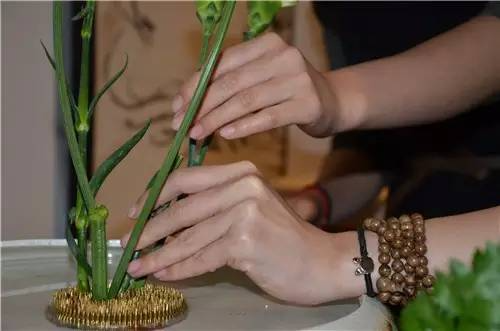
"Break " correction method
For trees like plum and papaya, you actually need to break their branches first and then bend them. The breaking here does not mean breaking them completely, but only gently breaking two-thirds of the branches, and then bending them. At this time, press your two thumbs on the part you want to bend, and apply appropriate force depending on the condition of the branch.
"Bake or soak in boiling water " correction method
This is the method used for Nandina branches. First wrap the leaves tightly, soak the part you want to bend in boiling water, and then put it on the fire while baking and twisting it. There are also some methods that only use boiling water to bend it, which is called the boiling water soaking correction method. The above two methods are suitable for flowers that are easy to break.
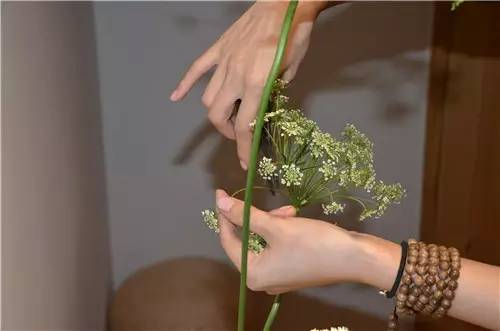
"Correction method
This method is mainly used for relatively soft wooden flowers. It is to grasp the flowers with fingers, palms or both hands and twist them.
"Cut" correction method
This method is to use scissors to gently cut the part to be bent before bending. The cut should be made on the opposite side of the bending direction. In most cases, the branches are placed on a horizontal line and bent downward, so the cut is made on the top. Then bend in the opposite direction from the cut. Soft flowers such as willows and peaches will return to their original shape immediately after bending, so you need to cut a thin layer of their epidermis before bending. The specific method is to first use the tip of the scissors to cut the epidermis thinly, then hold it with the cut facing up, put your two thumbs under the cut, and slowly bend it.
Herbal remedies
The "sewing" correction method
is used when you want to make the flower stems of herbs such as chrysanthemums bend sharply. First, use a tool such as chrysanthemum bending scissors to make the flower stems into the desired shape, then use a thin awl to drill a few small holes in the bent part, and then insert a bamboo stick into it so that the bent part cannot return to its original shape. Since the flower stems are sewn together with bamboo sticks, it is called the sewing correction method.
The "twisting" correction method
is completely different from the correction method for twisting woody flowers. It is mainly a method to straighten the curled narcissus leaves. The narcissus leaves are twisted and pulled at the same time, that is, these two methods are combined to achieve the purpose of correcting the leaves. The general practice is to soak them in water for a while before doing it, which has a better effect.
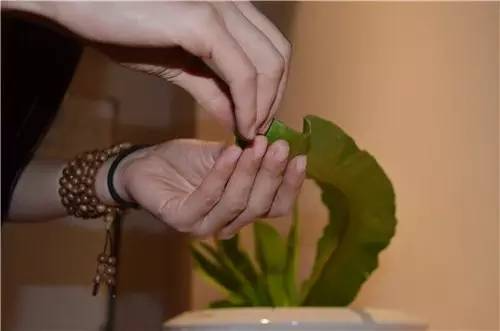
The "crushing" correction method
is a method of crushing the stems of herbal flowers with your fingers or the handles of scissors while twisting them. The purpose of this is to crush the internal tissue of the flower stem to make it bend. This method requires special attention to not damaging the epidermis.
The "twisting" correction method is
that for long, hard leaves like gladiolus, you must twist them in circles to make a smooth curve.
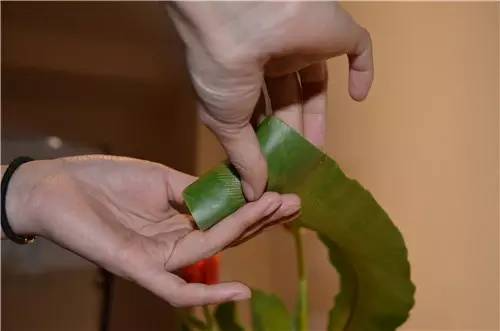
The correction method of "stroking"
is often used for flowers with leaves as the main part, such as Duruo and Acorus. The specific method is to use the belly of the thumb to gently shape the leaves while stroking them. The effect is better after soaking them in water.
The "soft bend" correction method
is to make the herb have a soft and slow bend. The specific method is not to give the herb a strong stimulus all at once, but to feel the herb with your hands and apply force slowly. Except for the two ends of the herb, you cannot touch it with your hands, so as not to damage the middle part and to produce a soft and gentle curve.
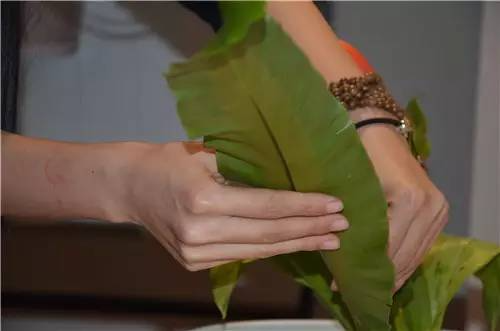
Correction method using "fingertips"
The stems of chrysanthemum, orchid, duruo, etc. are relatively soft. Hold the flower stems with both hands until the tips of your thumbs feel like they are being strangled by the stems, then begin to bend the flower stems.
The article is selected from "Flower Arrangement"